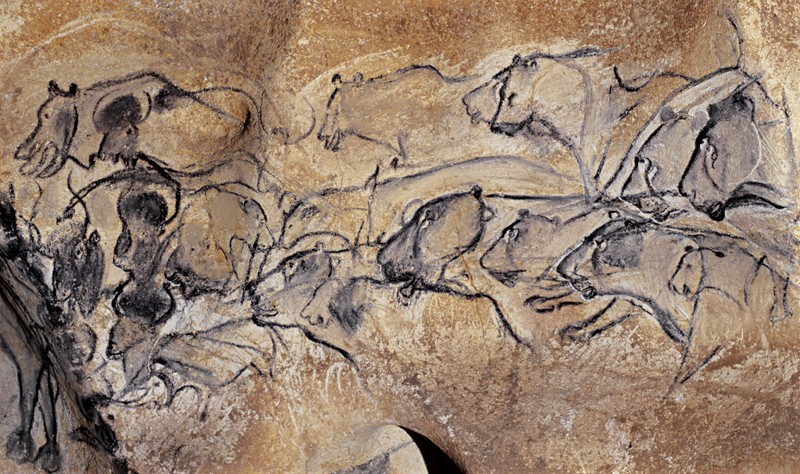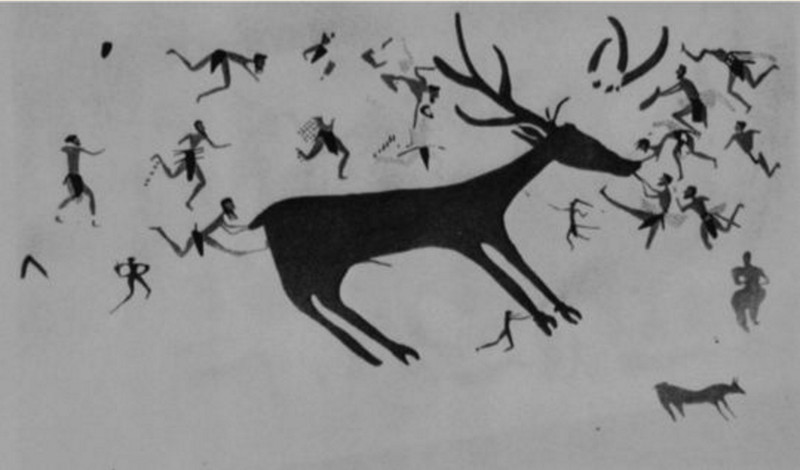The Archaeological Origins of Man's Dominion Over Animals
By Jim R. McClanahan
By Jim R. McClanahan
Genesis 1:26 states:
And God said, Let us make man in our image, after our likeness: and let them have dominion over the fish of the sea, and over the fowl of the air, and over the cattle, and over all the earth, and over every creeping thing that creepeth upon the earth.This passage has long been cited or paraphrased by people claiming man is superior to animals. However, the archaeological record shows this perceived superiority appeared late in man's history. The European cave paintings of the Upper Paleolithic (50k-10k years ago) show that man had a healthy, if not fearful, respect for animals as they were their main food source and antagonists. This respect is shown through the highly naturalistic depictions of the animals and their behaviors, which suggests the artists analyzed the creatures at length. Hominins lived alongside other animals for millions of years, so its no surprise then that early man would view them as equals.
Image may be NSFW.
Clik here to view.
A pride of lions chasing bison, from Chauvet Cave in France, 32,000 years old.
Clik here to view.

A pride of lions chasing bison, from Chauvet Cave in France, 32,000 years old.
However, hunter-gatherers of 10th millennia BCE Turkey started to set man apart from animals. Evidence from Gobekli Tepe, a 12,000 year old religious site, suggests these Neolithic people believed in a spirit realm inhabited by ancestors and animals, and the only person capable of mediating between this world and the next was a shaman. This is best illustrated by the massive, T-shaped monuments erected by these people. The tops are adorned with animal spirit reliefs, while the supports are shaped like human figures. Thus man takes a centralized role in controlling animal spirits. This belief was no doubt influenced by the logistics of such a site. Building such large monoliths would have called for the division of labor (the precursor of social hierarchy), involving religious leaders directing artisans and work crews to erect the stones. And having so many peoplewho normally lived nomadic lifestylesin one place in one time would have called for lots of food, which would create the need for certain people to specialize in the pooling of wild game and grains (the earliest precursor of farmers and animal and plant domestication). One can then see how the concept of a social hierarchy and the domestication of wild game could lead to the idea of animals being inferior.
Image may be NSFW.
Clik here to view.
The teasing and baiting of a stag from Catalhoyuk.
Clik here to view.

The teasing and baiting of a stag from Catalhoyuk.
This is what we find in the 9,000 year old Turkish settlement of Catalhoyuk, which was built sometime after hunter-gatherers transitioned to a sedentary lifestyle and began the domestication of animals and grain. According to Ian Hodder (2010), In the art of Catalhoyuk humans are shown teasing, baiting, and dominating oversized bulls and other wild animals, in stark contrast to Paleolithic art" (2121). So domestication played a large role in the concept of mans superiority over animals.
Source
Hodder, Ian. 2010. Religion in the emergence of civilization: Çatalhöyük as a case study. New York, N.Y: Cambridge University Press.
